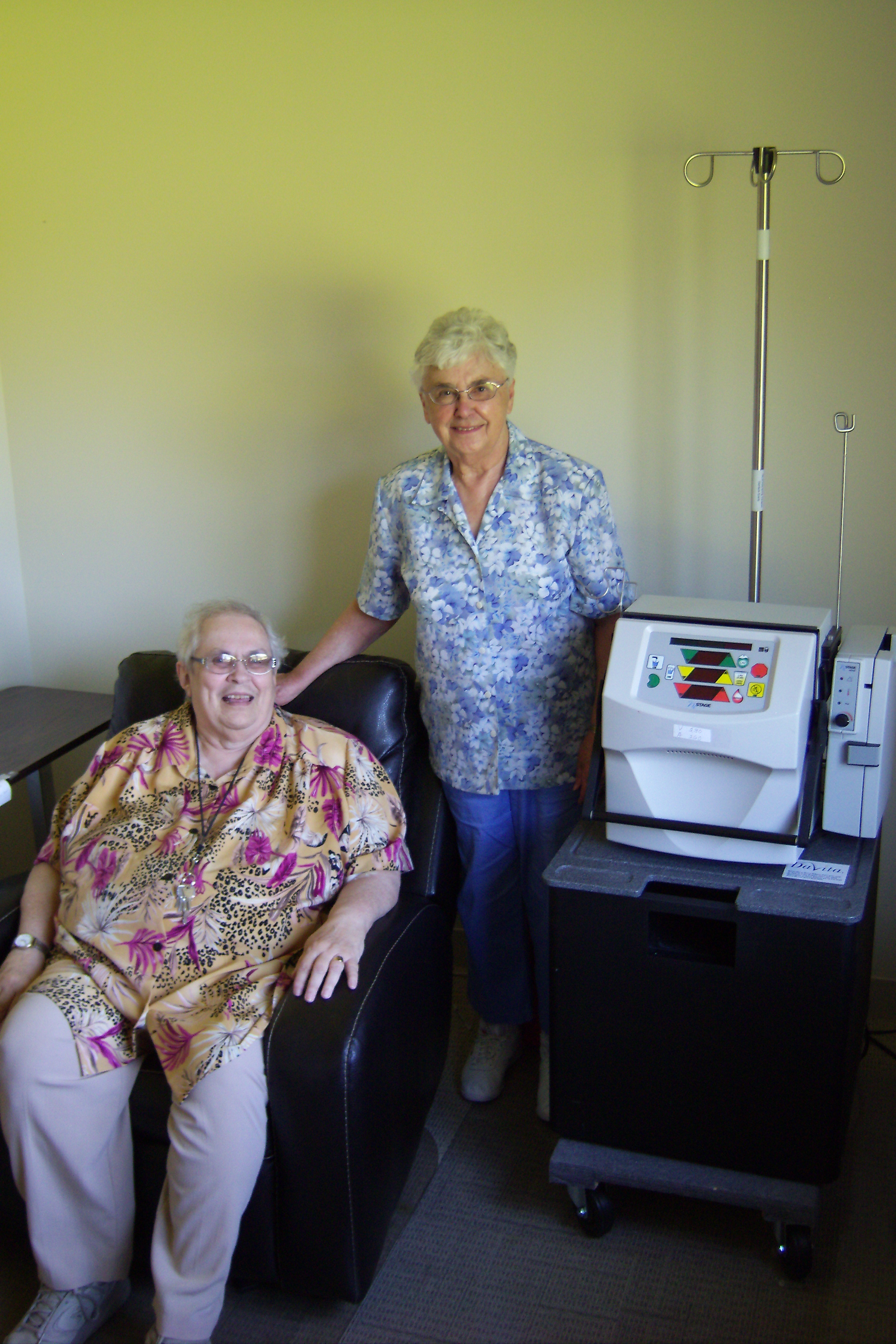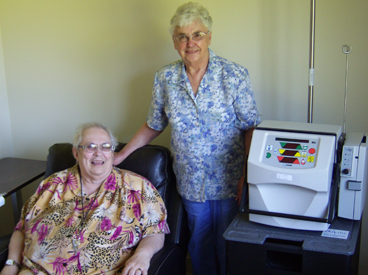
Sister Mary, assisted by care partner Sister Catherine, is one of just 8 percent of people with ailing kidneys who currently receive dialysis at home—in her case a Benedictine monastery. Five days a week after morning prayer, Sr. Catherine helps Sr. Mary with her dialysis treatment while they work on crossword puzzles, embroider, and watch their favorite program The Price is Right.
Most people don’t think much about their kidneys—until they go awry. Choosing foods with less salt, and keeping blood pressure and sugar levels in check protect kidney health. Yet about one in ten Americans (more than 20 million) has some level of chronic kidney disease (CKD). CKD is considered a silent disease because many people don’t experience any symptoms until the kidneys are badly damaged. In 2010, more than 870,000 people were being treated for kidney failure. Only blood and urine tests can tell how well kidneys are functioning.
Diabetes and hypertension are common causes of CKD. Over time, elevated blood sugar and blood pressure can impair the kidneys’ ability to filter blood as they should, causing harmful chemicals to build up in the body that lead to other problems. And when kidneys fail, the only treatment options are a transplant or lifelong blood dialysis. More than 90 percent of dialysis patients travel to a medical center three times each week to receive the therapy, although clinical data show more frequent treatment with portable, at-home dialysis significantly improves symptoms and survival.
Today’s home dialysis units are smaller and easier to use than earlier versions. Dozens of small studies show patients who do daily or nightly dialysis at home report better blood pressure control, less limited diet, and reversal of some heart damage caused by high blood pressure, according to the NIH brochure on home hemodialysis.
Although growing, the number of clinics that offer home dialysis is limited. Find training sites at the the Home Dialysis Central website.
Become a Saturday Evening Post member and enjoy unlimited access. Subscribe now



